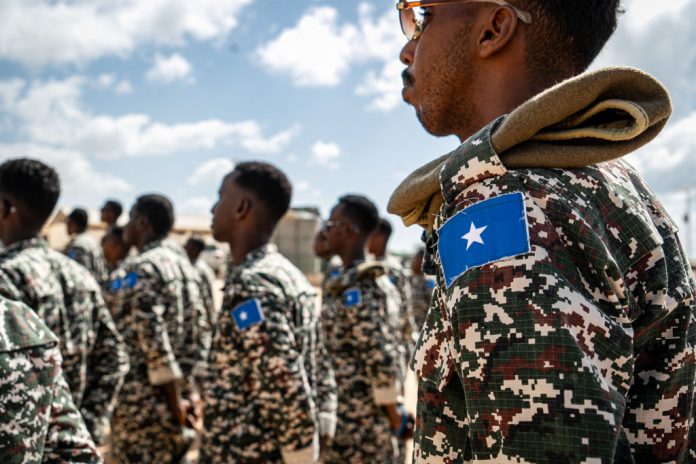Facebook Twitter (X) Instagram Somali Magazine - People's Magazine
For more than a decade, improvised explosive devices (IEDs) have emerged as the deadliest weapons used by the terrorist group al-Shabaab against both soldiers and civilians in Somalia. The ongoing conflict has escalated recently, with an increase in IED attacks as the Somali National Army (SNA) expands its control over various regions.
Devastating Toll of Al-Shabaab IEDs
Since 2014, al-Shabaab’s IEDs have resulted in over 14,000 deaths and injuries, with 61% of the victims being civilians, according to Action on Armed Violence, a UK-based organization that monitors armed violence globally. In the past year alone, IED attacks have killed or injured around 1,500 Somalis, the majority of whom were civilians. Recent bombings in Mogadishu and central Somalia illustrate the ongoing threat, including a café bombing in July and a tea shop bombing in August.
Al-Shabaab Targeting Civilians and Military Personnel
The strategic targeting of civilian establishments, such as restaurants and hotels frequented by soldiers and government officials, has heightened the risks faced by ordinary Somalis. Notable incidents include a car bomb explosion near the National Theatre in Mogadishu on September 27, which killed six and injured ten. The town of Buloburde, home to an African Union peacekeeping base, has also seen frequent IED attacks, underscoring the danger to both military and civilian populations.
Response from the Somali National Army
As the SNA continues its offensive against al-Shabaab in central and southern Somalia, the group has intensified its bombing campaign in retaliation. In 2023, over 820 SNA soldiers were reported killed or wounded, with many casualties resulting from IEDs. Colonel Faisal Ali Noor of the SNA highlighted the dangers faced by troops, stating that soldiers often encounter IEDs while responding to previous explosions.
“Sometimes, IEDs detonated while we were digging, leading to casualties,” Noor explained. “Due to our limited knowledge, we even resorted to lighting fires to defuse the IEDs, which resulted in further fatalities.”
Training and Capacity Building for Bomb Disposal
To combat the rising threat of IEDs, experts emphasize the need for more trained personnel within the SNA. The United Nations Mine Action Service (UNMAS) has made strides in enhancing the capacity of Somali explosive ordnance disposal teams, having trained 46 teams in recent years. A recent monthlong “train the trainer” program was launched to empower Somali trainers to teach their peers, ensuring sustainability in the fight against explosive hazards.
“This course marks a significant milestone with Somali trainers for the first time training Somali students, ensuring sustainability for the SNA in responding to the threat posed by explosive hazards to communities across the country,” said Fran O’Grady, chief of UNMAS in Somalia.
The Challenge Ahead
The increase in IED attacks coincides with a rise in homemade explosives, which are often constructed from easily obtainable components smuggled into Somalia. James Swan, the UN’s acting representative to Somalia, underscored the urgent need to address this threat, stating, “We know the devastating impact they have on Somali communities, and the primary targets are your fellow soldiers in the SNA.”
As Somalia continues to expand its corps of trained bomb disposal experts, the SNA must remain vigilant in the face of ongoing threats from al-Shabaab, which continues to employ IEDs as a primary tactic in its insurgency.

